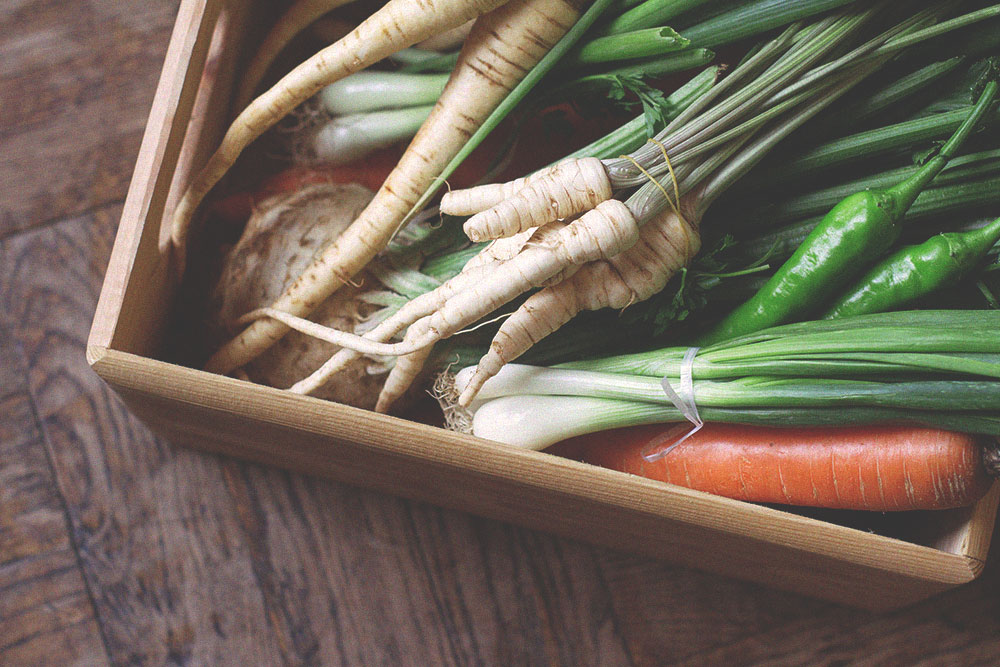From restaurants to markets, locally-sourced foods has grown in popularity in recent years. Let’s get to know the real definition of “local”.
BY: MARCY GASTON, MS, RD, CD
Locally-grown food movement has become mainstream in recent years, but what does the term “local food” actually mean? A big issue facing this movement is providing a simple definition of “local food.” However, “local” means something different to each person.
Let’s start with how you may think of local foods on a personal scale.
If you had pick a number of miles that you consider local, what would it be? 10? 25? 50? 100? 300?
Then ask yourself, could you eat 90% of your diet exclusively from local foods, say within a 100 mile radius of your home? That means gathering 90% of your diet — everything from seasonings (salt, herbs, etc) to flour to sugar to meat. Is this even feasible and do you want to do this?
It all likely depends on where you live.
There are some areas of the United States that are fortunate enough to have a large variety in their local food system (ahem, California) than other parts of the country (let’s say, northern Minnesota) simply due to seasonality of food and growing conditions. Perhaps it’s even more of a challenge to define local food in some areas where winter seems endless (like Montana or Alaska).
Farmer’s markets, CSA shares, and finding local meat and eggs are all ways to eat locally on a consistent basis. However, not everyone has the means or the time to go to farmer’s markets or pay for a CSA share. They rely on big grocery store chains to get their food.
So, let’s now ask the question: what does local mean to these corporations?
“Local” is the new “organic” in marketing terminology. As people become more familiar with the food system, the more they want sustainable food choices. Because there is no official definition for “local food”, big corporations are defining local for their own business models, which isn’t a big surprise.
Here is a list of several grocery stores and what they consider “local food.” This is by no means an exhaustive list of grocery stores in the U.S., but a sampling to see how each one may define “local food” differently:
Walmart – Local food is produce grown and sold in same state where the store is located.
Whole Foods – They leave it up to the stores, but they basically use state lines. A big state like California is divided into areas, like “Bay Area.”
Meijer – Products are considered local if they are sourced within their 6-state region (Michigan, Ohio, Indiana, Illinois, Wisconsin, and Kentucky).
Kroger – Local food is anything sourced within 400 miles of the store. They have a nice new website dedicated to local farmers and sustainability.
Safeway – They have regional growing partners. They also had a policy that local food is less than 8 hour drive to the store.
Publix – Local produce is sourced within the states the store is located.
(If your grocery store was not listed, you can always look on their website to see how they define “local food.”)
Now it’s up to you to decide what “local” means. Begin with a personal definition (i.e., food sourced within your state) and try your best to follow it. Consuming 90% “local food” could be a challenge for most people. If that’s the case, start with realistic, attainable goals, such as only buying local seasonal produce.
In most communities, a farmers market is nearby during the summer and fall months, providing you a chance to purchase seasonal produce from local growers. Or, if you are able, plant a garden, no matter how small.
That’s about as local as you can get.
Marcy Gaston, MS, RD, CD is a private practice dietitian and chef based in Whidbey Island, WA. With a focus on integrating cooking and sustainability, Marcy guides individuals towards healthy eating habits that mutually support the food system in order to protect future generations to come.

